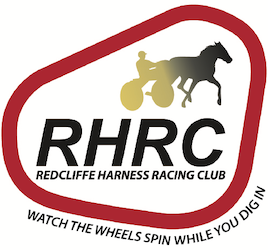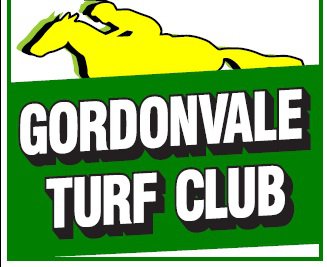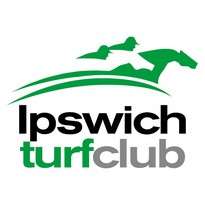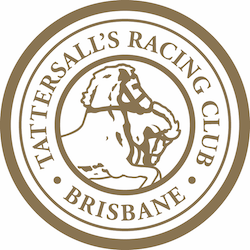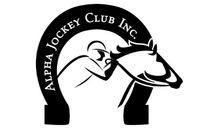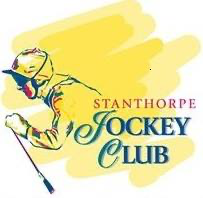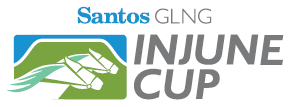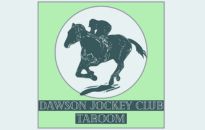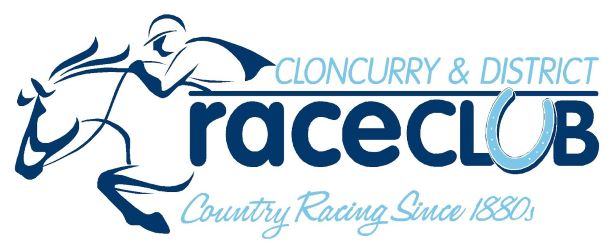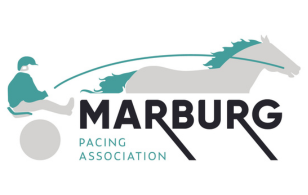
Tales Of The Past: Homing in on heritage
By Ross Stanley
There is no better time than the present to explore racing’s past. The Thoroughbred Racing History Association (THRA), with the support of the Brisbane Racing Club, develops and operates a Heritage Unit with arms at Eagle Farm and Doomben.
The first port of call for interested folk is the organisation’s website (qhrm.org.au). This comprehensive source is constantly expanding with new sections and content designed to broaden the scope and currency of the coverage. A spin off is that turf followers who reside well away from Brisbane can explore so much online.
Before you take another stride, occupy the box seat and watch the YouTube clip on the home page. TRHA president Peter Howard’s narration pinpoints highlights at both branches.
The first of the current eight components on the top menu bar is Museum. The location is the top floor of Eagle Farm’s Old Tote.
The two underlined links in the opening paragraph, namely Julius Totalisator and online data and computation system, respectively of eight minutes and 15 minutes in duration, feature Brian Riley speaking in depth about George Julius, his Eagle Farm tote and later developments.
In 2015, the Museum was awarded the Queensland Business History Award. There is a clickable link to a two-minute video that touches on some of its sights.
Research Centre introduces the rooms at the winning post end of the first floor of Doomben’s Public Grandstand. The zone houses the James McGill Library, the Pascoe Family Pictorial Wall, the Stanley Collection, the Premier Jockeys Wall, glass column showcases, seating for audio-visual viewing and a fascinating newsreel tribute to Bernborough, the 1940s icon whose memorabilia is featured in the Library.
Tours in 2024 incurred no charges, however, donations in lieu by participants were appreciated. Most visits were conducted on Wednesday mornings with the group staying on for a midweek race meeting that offered free admission to the course and the Members area. Details of TRHA’s arrangements for 2025 can be ascertained by emailing heritage@brc.com.au or phoning 07 3630 2245. The small team of volunteers are in attendance only on Tuesday and Wednesday mornings.
Racing History encompasses People (associates, bookmakers, jockeys, owners-breeders and trainers), horses, venues for racing and races, a rare and invaluable service that extensively chronicles every black-type contest in Queensland. The results and links to audio-visual replays are meticulously and promptly updated.
News circulates Annual Reports and newsletters while Events includes overviews of the annual TRHA-BRC National Trust Heritage Festival presentations.
Education provides documentaries and slideshows with the titles Doomben: Past and Present, Eagle Farm: Past and Present and For Young Beginners. A new, growing segment is Reference Materials. Gallery is earmarked for an overhaul and enlargement this year.

PHYSICAL EXPLORATIONS
The Eagle Farm precinct is the historic heart with the aforementioned Julius Totalisator as its centrepiece. Amidst the wide array of framed photographs, Brian Malt paintings, trophies and memorabilia are the exhibits relating to Tulloch.
The champion’s 1961 Brisbane Cup is in a prominent spot, courtesy of a kind arrangement with Debbie Haley, Sue Ridgewell and Ruth Bevan, the grand-daughters of the horse’s owner Evelyn Haley.
Also at the Old Tote is an amazing framed montage about Tulloch put together by Lem Bann, the stallion’s talented strapper.
Author Ken Linnett’s wonderful work Tulloch: The Extraordinary Life and Times of a True Champion won the 2018 $3000 Whittaker Award for the best book published on horse racing in Australia and New Zealand in the previous two years. Linnett also wrote Rough Habit: An Unlikely Champion (2020). The McGill Library and some volunteers were of assistance to Linnett with the information gathering for both books.
When it comes to visits to the Eagle Farm Museum, a special program is conducted on the ground floor for visitors who might find the staircase a challenge.
Meanwhile, across Nudgee Road, a feature showcasing the feats of female jockeys can be viewed on Doomben racedays because the display cabinet is in the public domain near the first floor escalators.
Inside the Doomben rooms are niches for the grand sprinters Falvelon, Chief de Beers and Doomben Cup winners. Bookmakers’ satchels are reminders of a now bygone era.
A high point is the large gallery of photographs taken by the patriarch Al Pascoe and his sons Barry and Noel, his grandchildren Brett Pascoe and Cindy Hurley and his great-grandson Daniel Hurley. The Pascoes artfully captured racing in Brisbane for more than six decades. For more than half-a-century, a member of the Pascoe kinfolk was a The Courier-Mail photographer.

The visual arts are also represented at Doomben by The Strapper, a print by William Dobell. In 1907, James McGill (Senior) presented the Q.T.C. with an H. S Wilkinson painting of Fitz Grafton and his jockey Archie Scott. Woodcraft is illustrated by the rocking horse that jockey Billy Briscoe made for his children.
The Stanley Collection is in a special room. Bill and Ev were popular and highly successful owners. Television replays of their hits, Rajah Sahib’s Cox Plate and Stradbroke prizes, Ev’s outfits, numerous outstanding scrapbooks and Bill’s sailing exploits are enthralling exhibits.
It is perfectly appropriate that the Library at Doomben is named in honour of the phenomenal racing stalwart James Francis McGill (1898-1983).
He was a seven-year-old Ipswich boy when Fitz Grafton, a colt bred, owned and trained by his highly successful grandfather, James McGill (1842-1918), won his second Brisbane Cup in 1905.
The star won 11 features at Eagle Farm. At two, he secured the Claret Stakes and the Stradbroke and then followed suit with the Guineas and Derby the following season. The bay was later sold and took out India’s famous Viceroy Cup in 1906 and 1907. James Senior operated a stud and stables called Blacklands at today’s suburb of Raceview.
The youthful pursuits of James Junior included teaching, tennis, rugby union, rugby league, swimming. athletics, shooting, cricket and snooker. He also found time to serve in the Citizen Military Forces. The Australasian Book of Thoroughbred Racing indicated that J. F. McGill was named "Queensland's most experienced all-round sportsman" in 1959.
He was an official for more than 25 bodies with some related to boxing, tennis, shooting, hockey on skates, pony club, cricket, swimming, YMCA, the Patriotic Effort, Church of England Men's Society, Empire City Botanic Gardens and the Guild of St Oswald.

Of special note was his leadership with the Time Off Club in Brisbane. The Elizabeth Street premises supported non-local wartime troops who were in transit. Not surprisingly, “J.F” was awarded an Order of the British Empire (OBE) in 1962 for his honorary work for charities and sporting organisations.
As a journalist, Jim wrote about racing and sport for numerous Brisbane newspapers and participated in a radio program on 4KQ. He received the 1977 Racing Writers' Contribution to Racing Award.
One of McGill’s monumental efforts were his prolific pieces penned for the QTC Racing Calendar, a key monthly periodical that has morphed into RACE Magazine. He also provided a series of social snippets for each issue that could be described as a hard copy precursor to Facebook.
From around 1947, McGill was a QTC steward in Queensland’s rural south-east corner and Brisbane. In 1960 he set up the QTC Country Clubs Association.
Another major role was in the development of the QTC Apprentices School, its internal sports carnivals, a social committee, its fraternity picnic days at Eagle Farm and the QTC Licensees’s Charity Fund.
Jim’s official work extended to other fronts for the benefit of the likes of breeders, owners, trainers, jockeys, stewards and equine researchers.
After retiring in 1975, McGill furthered his passion for history and began collecting all sorts of items at Eagle Farm. It kicked off with a small display for Members. Despite some ups and downs concerning locations, the current overall collection is very extensive. The examples mentioned in these pages are a tip of the iceberg.
While new additions and donations are welcome, it is vital that the Heritage Unit be contacted for advice on the Collections Policy before any items are transported to the Doomben hub.
At the risk of omitting deserving names, there have been a variety of earnest workers for the TRHA, which was launched in 2012 and also during the informal lead up stages.
Jim Anderson, Noel Best, Noel Pascoe, Alec Barnes and Helen Coughlan were quick off the mark. Other prominent figures include David Gibson, Kerry Woodlock, Don Broadbent and Peter Howard with the likes of Karen Best, Chris Morrison, Alan Capper, Paul O’Grady, Alayne Peterson, Peter Lindeberg, Jan Carnegie, Hugh Naughton, Michael Craitem, John Wagstaff, Ray Moriarty, Danny Fitzpatrick, Bruce Halligan, Fred Manahan, Julie Ann Standfield, Neville Hacker and Paula Burnett also on the team that put its shoulder to the wheel.

THE RESOURCES
QTC archival materials have been saved including manuscripts that are more than a century old. The Queenslander newspaper produced a great series of the State’s outstanding gallopers during the 1920s and 1930s.
Harking Back: The Turf - Its Men and Memories by Chas Collins and George Thompson (1924) contains 37 absorbing chapters from Queensland racing’s rudimentary beginnings.
There are other valued journals such as the first Queensland Racing Calendar that was produced 1886. This monthly issue was the official organ of the Queensland Turf Club. It has morphed over time to be Racing Queensland’s Race Magazine. It is important to be aware that the current edition plus copies going back for several years are accessible at Racing Queensland’s website.
Moving forward to recent eras, the long list of biographies embraces Glen Boss, Arthur Lister, Darby McCarthy, Kevin Langby, Linda Jones, Aborigines and the Sport of Kings, Peter Cook, Wayne Harris, Jimmy Cassidy, Con Doyle, Bart Cummings, Brian Mayfield Smith, Tommy Smith, Gai Waterhouse, Tommy Woodcock, John Tapp, Bert Bryant and Bill Collins.
The equine category includes Phar Lap, Tulloch, Bernborough, Rough Habit, Might and Power, Vo Rogue, Winx, Black Caviar, Rogan Josh, Peter Pan, Shannon and Drongo, The Immortal Loser.
Class Racehorses is an annual publication that focusses on Group 1 heroes and heroines from both sides of the Tasman.
When it comes to venues, Eagle Farm: Queensland Turf Club - A Place in History by Coughlan and Pascoe, Courses for Horses and Keith Noud Recalls are texts about metropolitan tracks with the Gold Coast, Deagon and a number of smaller clubs such as Oak Park and Burrandowan also in the collection.
There are several general books structured in chronological order that make for enjoyable browsing.
Large boxed sets of monthly magazines such as Racetrack, Turf Monthly, Greater Queensland Racing and the Australian Bloodhorse Review are at the readers’ fingertips as are titles about the Melbourne Cup, Cox Plate, Caulfield Cup and the Golden Slipper.
There is a hard copy set of the Australian Stud Book. This source of pedigrees and performances has now been superseded by a searchable on-line database. Some TRHA committee members are subscribers and can help out with breeding queries. Non-subscribers can find out the year of birth of a thoroughbred. This helps determine the galloper’s likely competitive years. A check of the index to the relevant Australian Race Results may bear fruit.

The Miller’s Guide, once known as the Punters’ Bible, was discontinued around a decade ago. However, earlier editions are kept in the Research Centre. Placings from the outset in Australia’s Group events plus form information on nominations for Caulfield and Melbourne Cups made this annual very useful. Pre-internet, it was a major “go to” publication. It also covered the outcomes of major sports.
Mark Oberhardt’s A Guide to Queensland Thoroughbred Racing (2010) is a first class reference book with thumbnails for a vast number of horses, trainers and jockeys plus results of a swag of Queensland events. It is like an opening batsman. It faces the questions first up.
The History of Australian Thoroughbred Racing, written by Andrew Lemon and illustrated by Harold Freedman, is a magnificent asset. The three detailed volumes are: The Beginnings to the First Melbourne Cup, The Golden Years: 1862 to 1939 and In Our Time: 1939 to 2007. Citings from original sources reflect the credence placed on accuracy.
Captivating art work is the trademark of Bob Charley’s compilation called Heroes and Champions while The Track covers all the early inductions into The Australian Racing Hall of Fame.
Books about Breeding, Studs and The Horse itself are stocked. Enthusiasts with advanced levels of knowledge would relish the Papers composed by the late Fred Manahan, the leading equine veterinary surgeon who was a keen member of the TRHA Committee.
Literature is not forgotten. Three examples on the shelf are The Big Book of Australian Racing Stories, “Banjo” Paterson’s Off Down The Track and Galloping Off In All Directions: An Anthology for Horse Lovers.
Another information source is the huge quantity of racebooks that are organised in boxed batches by year. Three Way Photos has passed on a massive body of Queensland country and provincial racebooks with film negatives from the pre-digital period.
The James McGill Library has earnt praise for its quality by the John Oxley Library curator Dianne Byrne and Kevin Lambkin, is part of Brisbane's Living Heritage Network.
The annual BRC-TRHA Heritage Festival programs have been educational and celebratory. Some of the themes to date are 2015: Camp Ascot: Wartime at Eagle Farm, 2017: Hot Favourites-The Voices of Racing, 2018: High Stakes: History of the Winter Carnival, 2019: The Best Odds(included Carnival betting highlights), 2020: Not Held (Covid), 2021: Staying The Distance, 2022: Albion Park, 2023: The Stradbroke Habit, 2024: Gunsynd The Legend.

AN ADDED DIRECTION
A novel project that was a winner for TRHA in 2024 was a visit by lower primary school pupils.
The learning activities were centred around pertinent Australian Curricula objectives. It involved hands on experiences with Racing Queensland educators, jockeys, a trainer and the greys used by Clerks of the Course.
There is a wealth of potential subject matter with upper primary cohorts likely to also explore racecourse technology, racing jobs and local history.
For nearby schools, the area from Newstead House to the mouth of the Brisbane River is abundant with content. There is a budding aviation chapter with Sir Charles Kingsford Smith, Bert Hinkler and Amy Johnston and the changes to aerodromes and airports
Transportation is to the fore courtesy of the railway, trams, the Gateway Bridge and wharves. Architecture is also prominent with the contrast of Toorak House, fine Queenslanders in Ascot and the riverside high-rise belt. Wartime, the Eagle Farm Female Prison Farm and the fate of the Indigenous people are further significant study points.

THE WRAP
The Thoroughbred Racing History, in existence for just over a decade, has certainly built on the foresight of a fossicker of Irish descent. James Francis McGill did dig up lots of treasures. The inspirational energies he drew on are highly motivational for his modern day followers.
Queensland’s racing enthusiasts are fortunate to have access to a highly significant museum, gallery and library backed by a major race club.
The group is in tune with its multi-pronged Mission Statement that is an advance of the orthodox approach of collect and conserve. It not only makes knowledge available and fosters an appreciation of the past but it also aims to stimulate interest in the present day and the future.
Note: Although the Heritage Unit is sometimes referred to as the Queensland Racing Museum, it should be noted that the Ipswich Turf Club has an interesting museum in its Old Tote and an excellent timeline on its website. The TAB Clubs at the Sunshine Coast, Rockhampton, Townsville, Mackay, the Gold Coast and, in particular, Warwick also have historical references on their web pages.

